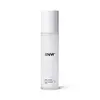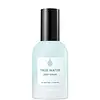What's inside
What's inside
 Key Ingredients
Key Ingredients

 Benefits
Benefits

 Concerns
Concerns

No concerns
 Ingredients Side-by-side
Ingredients Side-by-side

Water
Skin ConditioningButylene Glycol
HumectantPropanediol
SolventGlycerin
HumectantTrehalose
HumectantMethylpropanediol
SolventGlyceryl Stearate
Emollient1,2-Hexanediol
Skin ConditioningPEG-100 Stearate
Diphenyl Dimethicone
EmollientTriethylhexanoin
MaskingCaprylyl Glycol
EmollientTromethamine
BufferingCarbomer
Emulsion StabilisingPolyglyceryl-10 Oleate
Skin ConditioningHydrogenated Lecithin
EmulsifyingEthylhexylglycerin
Skin ConditioningDisodium EDTA
Glyceryl Glucoside
HumectantMaltodextrin
AbsorbentHydrolyzed Pea Protein
EmollientAcetyl Glucosamine
Skin ConditioningSodium Hyaluronate
HumectantCaprylic/Capric Triglyceride
MaskingPalmitoyl Glycine
CleansingEctoin
Skin ConditioningBifida Ferment Filtrate
Skin ConditioningDipropylene Glycol
HumectantSaccharide Isomerate
HumectantHydrolyzed Sodium Hyaluronate
Skin ConditioningHydrolyzed Hyaluronic Acid
HumectantSodium Palmitoyl Proline
Skin ConditioningGlucose
HumectantHordeum Vulgare Extract
EmollientAmaranthus Caudatus Seed Extract
Skin ConditioningPolyglutamic Acid
Skin ConditioningHydroxypropyltrimonium Hyaluronate
Zea Mays Kernel Extract
Phosphatidylcholine
EmulsifyingSodium Citrate
BufferingCitric Acid
BufferingCeramide NP
Skin ConditioningAlchemilla Vulgaris Extract
AstringentRubus Idaeus Leaf Extract
Skin ConditioningGlycine
BufferingSerine
MaskingGlutamic Acid
HumectantLysine
Skin ConditioningAlanine
MaskingThreonine
Proline
Skin ConditioningArginine
MaskingWater, Butylene Glycol, Propanediol, Glycerin, Trehalose, Methylpropanediol, Glyceryl Stearate, 1,2-Hexanediol, PEG-100 Stearate, Diphenyl Dimethicone, Triethylhexanoin, Caprylyl Glycol, Tromethamine, Carbomer, Polyglyceryl-10 Oleate, Hydrogenated Lecithin, Ethylhexylglycerin, Disodium EDTA, Glyceryl Glucoside, Maltodextrin, Hydrolyzed Pea Protein, Acetyl Glucosamine, Sodium Hyaluronate, Caprylic/Capric Triglyceride, Palmitoyl Glycine, Ectoin, Bifida Ferment Filtrate, Dipropylene Glycol, Saccharide Isomerate, Hydrolyzed Sodium Hyaluronate, Hydrolyzed Hyaluronic Acid, Sodium Palmitoyl Proline, Glucose, Hordeum Vulgare Extract, Amaranthus Caudatus Seed Extract, Polyglutamic Acid, Hydroxypropyltrimonium Hyaluronate, Zea Mays Kernel Extract, Phosphatidylcholine, Sodium Citrate, Citric Acid, Ceramide NP, Alchemilla Vulgaris Extract, Rubus Idaeus Leaf Extract, Glycine, Serine, Glutamic Acid, Lysine, Alanine, Threonine, Proline, Arginine
Water
Skin ConditioningPentylene Glycol
Skin ConditioningGlycerin
HumectantMethyl Gluceth-20
HumectantMethylpropanediol
SolventBis-PEG-18 Methyl Ether Dimethyl Silane
EmollientPiper Methysticum Leaf/Root/Stem Extract
Skin ConditioningDioscorea Japonica Root Extract
Skin ConditioningArctium Lappa Root Extract
Skin ConditioningPhellinus Linteus Extract
Skin ConditioningAloe Barbadensis Leaf Extract
EmollientPortulaca Oleracea Extract
Skin ConditioningPueraria Thunbergiana Root Extract
Skin ConditioningGlycyrrhiza Glabra Root Extract
BleachingPaeonia Lactiflora Root Extract
Skin ConditioningCnidium Officinale Root Extract
Skin ConditioningSoluble Collagen
HumectantAloe Barbadensis Leaf Juice
Skin ConditioningHydrogenated Lecithin
EmulsifyingSodium Hyaluronate
HumectantButylene Glycol
HumectantTromethamine
BufferingAcrylates/C10-30 Alkyl Acrylate Crosspolymer
Emulsion StabilisingXanthan Gum
EmulsifyingAdenosine
Skin ConditioningHydrolyzed Corn Starch
HumectantSodium Polyacrylate
AbsorbentPvm/Ma Copolymer
Emulsion StabilisingPolyquaternium-51
Skin ConditioningGlycosyl Trehalose
Emulsion StabilisingBeta-Glucan
Skin ConditioningHydrogenated Starch Hydrolysate
HumectantRaffinose
Skin ConditioningBiosaccharide Gum-1
HumectantSucrose
HumectantInositol
HumectantPanthenol
Skin ConditioningLecithin
EmollientFolic Acid
Skin ConditioningCeramide NP
Skin ConditioningCholesterol
EmollientPalmitoyl Pentapeptide-4
Skin ConditioningPEG/PPG/Polybutylene Glycol-8/5/3 Glycerin
HumectantPEG-40 Hydrogenated Castor Oil
EmulsifyingParfum
Masking1,2-Hexanediol
Skin ConditioningCI 42090
Cosmetic ColorantLimonene
PerfumingWater, Pentylene Glycol, Glycerin, Methyl Gluceth-20, Methylpropanediol, Bis-PEG-18 Methyl Ether Dimethyl Silane, Piper Methysticum Leaf/Root/Stem Extract, Dioscorea Japonica Root Extract, Arctium Lappa Root Extract, Phellinus Linteus Extract, Aloe Barbadensis Leaf Extract, Portulaca Oleracea Extract, Pueraria Thunbergiana Root Extract, Glycyrrhiza Glabra Root Extract, Paeonia Lactiflora Root Extract, Cnidium Officinale Root Extract, Soluble Collagen, Aloe Barbadensis Leaf Juice, Hydrogenated Lecithin, Sodium Hyaluronate, Butylene Glycol, Tromethamine, Acrylates/C10-30 Alkyl Acrylate Crosspolymer, Xanthan Gum, Adenosine, Hydrolyzed Corn Starch, Sodium Polyacrylate, Pvm/Ma Copolymer, Polyquaternium-51, Glycosyl Trehalose, Beta-Glucan, Hydrogenated Starch Hydrolysate, Raffinose, Biosaccharide Gum-1, Sucrose, Inositol, Panthenol, Lecithin, Folic Acid, Ceramide NP, Cholesterol, Palmitoyl Pentapeptide-4, PEG/PPG/Polybutylene Glycol-8/5/3 Glycerin, PEG-40 Hydrogenated Castor Oil, Parfum, 1,2-Hexanediol, CI 42090, Limonene
Ingredients Explained
These ingredients are found in both products.
Ingredients higher up in an ingredient list are typically present in a larger amount.
1,2-Hexanediol is a synthetic liquid and another multi-functional powerhouse.
It is a:
- Humectant, drawing moisture into the skin
- Emollient, helping to soften skin
- Solvent, dispersing and stabilizing formulas
- Preservative booster, enhancing the antimicrobial activity of other preservatives
Butylene Glycol (or BG) is used within cosmetic products for a few different reasons:
Overall, Butylene Glycol is a safe and well-rounded ingredient that works well with other ingredients.
Though this ingredient works well with most skin types, some people with sensitive skin may experience a reaction such as allergic rashes, closed comedones, or itchiness.
Learn more about Butylene GlycolCeramide NP is a type of ceramide and formally known as ceramide 3.
Ceramides are intercellular lipids naturally found in our skin that bonds dead skin cells together to create a barrier. They are known for their ability to hold water and thus are a great ingredient for dry skin.
Ceramides are an important building block for our skin barrier. A stronger barrier helps the skin look more firm and hydrated. By bolstering the skin ceramides act as a barrier against irritating ingredients. This can help with inflammation as well.
If you would like to eat ceramides, sweet potatoes contain a small amount.
Read more about other common types of ceramides here:
Ceramide AP
Ceramide EOP
Glycerin is already naturally found in your skin. It helps moisturize and protect your skin.
A study from 2016 found glycerin to be more effective as a humectant than AHAs and hyaluronic acid.
As a humectant, it helps the skin stay hydrated by pulling moisture to your skin. The low molecular weight of glycerin allows it to pull moisture into the deeper layers of your skin.
Hydrated skin improves your skin barrier; Your skin barrier helps protect against irritants and bacteria.
Glycerin has also been found to have antimicrobial and antiviral properties. Due to these properties, glycerin is often used in wound and burn treatments.
In cosmetics, glycerin is usually derived from plants such as soybean or palm. However, it can also be sourced from animals, such as tallow or animal fat.
This ingredient is organic, colorless, odorless, and non-toxic.
Glycerin is the name for this ingredient in American English. British English uses Glycerol/Glycerine.
Learn more about GlycerinHydrogenated Lecithin is created from the hydrogenation of lecithin (a group of phospholipids). Hydrogenation is a chemical reaction between hydrogen and another element.
This ingredient is an emollient and emulsifier. As an emollient, it helps soften skin by trapping moisture within. As an emulsifier, it prevents oil and water ingredients from separating.
Methylpropanediol is a synthetic solvent and humectant.
As a solvent, it helps dissolve other ingredients, helping to evenly distribute ingredients throughout the product. This ingredient has also been shown to have antimicrobial properties which makes it a preservative booster.
Methylpropanediol is able to add a bit of moisture to the skin. It also helps other ingredients be better absorbed into the skin, such as salicylic acid.
Learn more about MethylpropanediolSodium Hyaluronate is hyaluronic acid's salt form. It is commonly derived from the sodium salt of hyaluronic acid.
Like hyaluronic acid, it is great at holding water and acts as a humectant. This makes it a great skin hydrating ingredient.
Sodium Hyaluronate is naturally occurring in our bodies and is mostly found in eye fluid and joints.
These are some other common types of Hyaluronic Acid:
Learn more about Sodium HyaluronateTromethamine helps balance the pH and improve the texture of a product. It is synthetically created.
As an emulsifier, Tromethamine prevents oil and water ingredients from separating. This helps stabilize the product and elongate a product's shelf life. Tromethamine also makes a product thicker.
Tromethamine helps balance the pH level of a product. Normal pH level of skin is slightly acidic (~4.75-5.5). The acidity of our skin is maintained by our glands and skin biome. Being slightly acidic allows our skin to create an "acid mantle". This acid mantle is a thin barrier that protects our skin from bacteria and contaminants.
Oral Tromethanmine is an anti-inflammatory drug but plays the role of masking, adding fragrance, and/or balancing pH in skincare.
1,3-Propanediol, 2-amino-2-(hydroxymethyl)-
Learn more about TromethamineWater. It's the most common cosmetic ingredient of all. You'll usually see it at the top of ingredient lists, meaning that it makes up the largest part of the product.
So why is it so popular? Water most often acts as a solvent - this means that it helps dissolve other ingredients into the formulation.
You'll also recognize water as that liquid we all need to stay alive. If you see this, drink a glass of water. Stay hydrated!
Learn more about Water